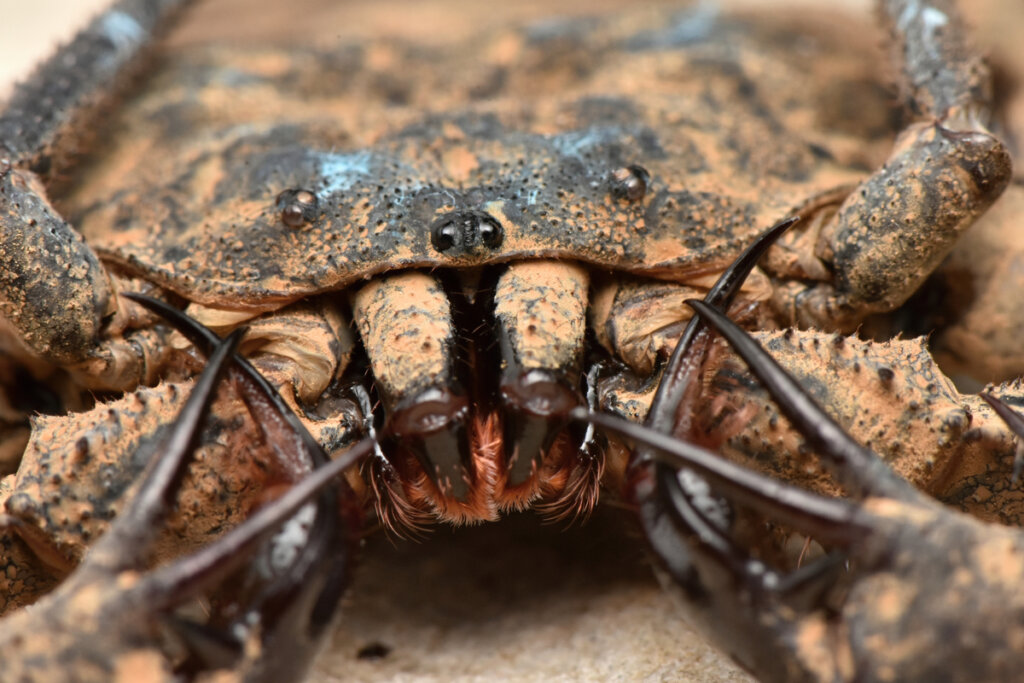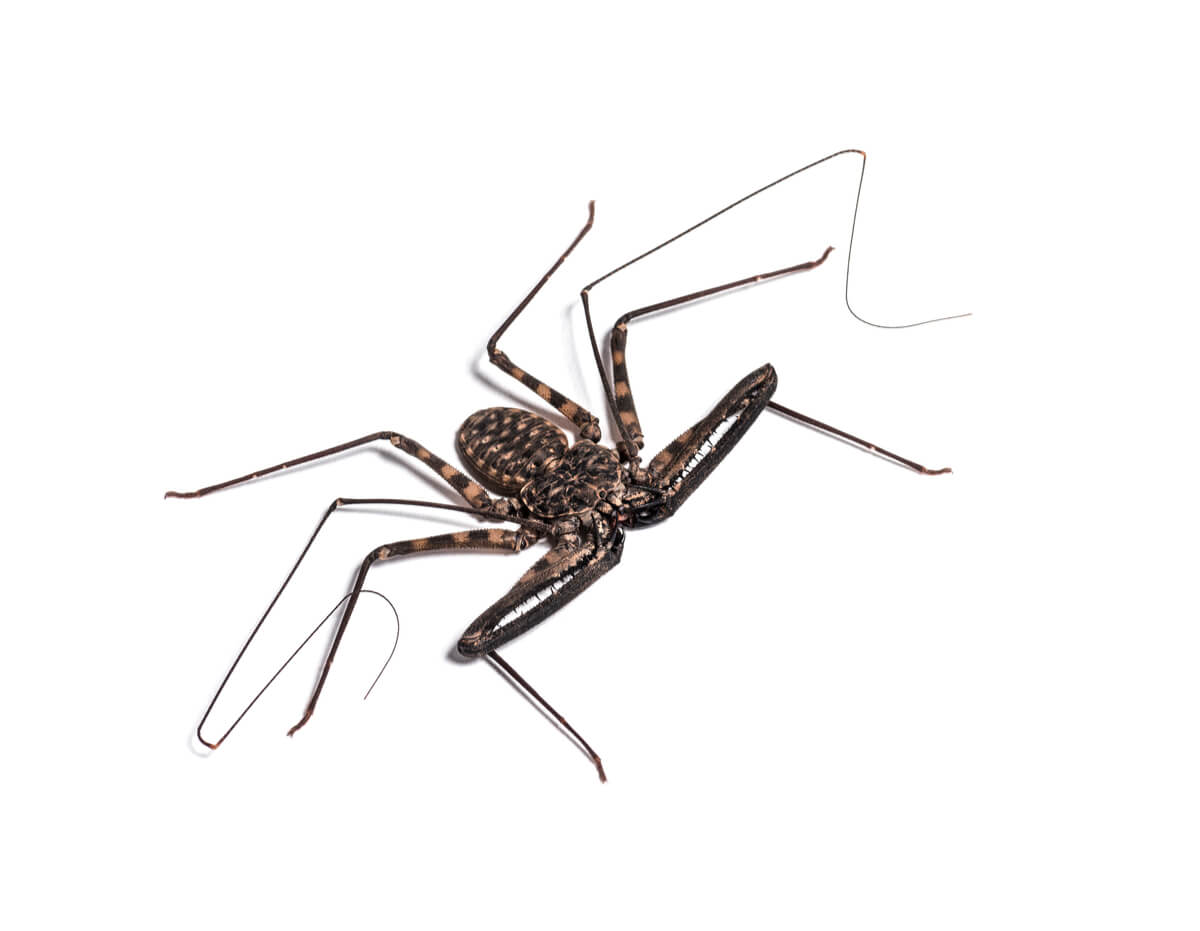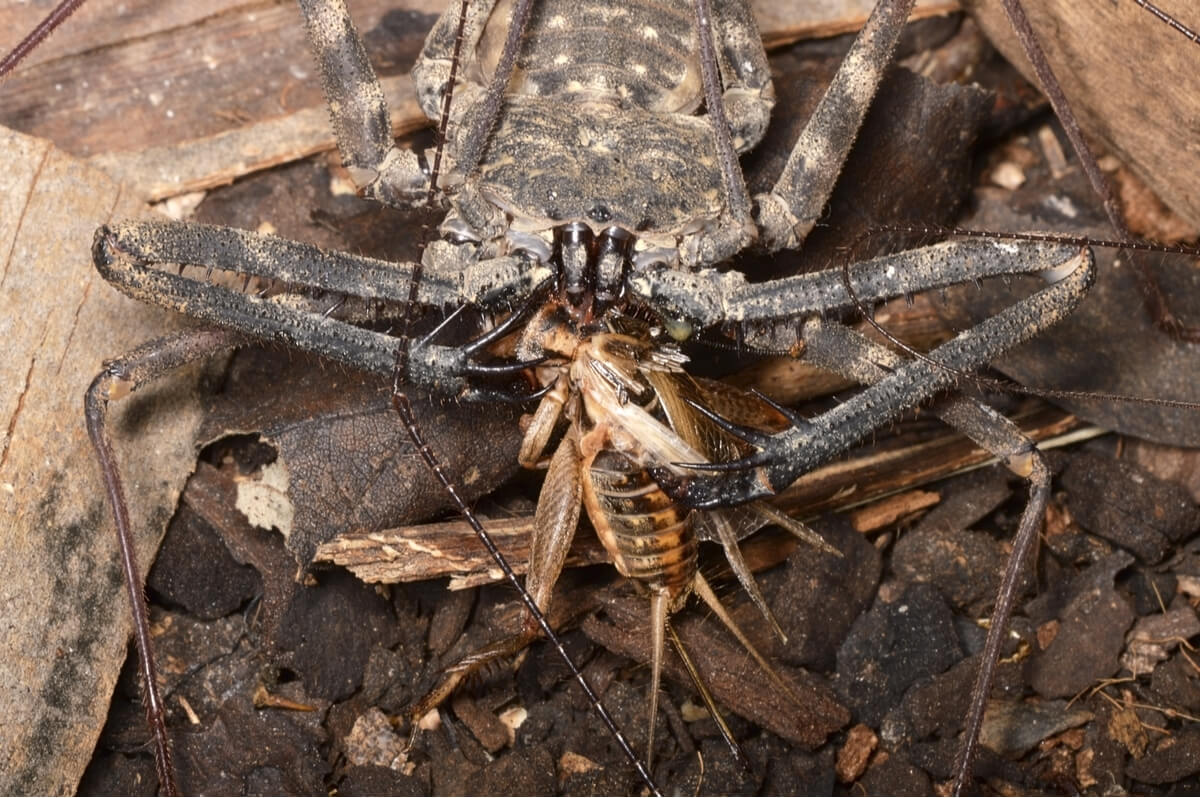Whip Spiders: How Do They Control Pests?

Spiders are known for their predatory qualities in the wild. However, one of its close relatives performs functions very similar to tarantulas and spider web-dwelling arachnids, without needing to hog all the cameras. We are talking about whip spiders (Amblypygi) and their striking features, with which they control pests.
Although at first glance you can mistake them for a spider – or even a scorpion – amblypygi are a group apart within arachnids. Animals belonging to the order Amblypygi are characterized by having a broad and markedly flattened body. If you want to know more about them, keep reading.
Main groups of whip spiders
These little-known arachnids are distributed throughout the world and, at present, there are about 170 species included in their group. Amblypygi, also known as whip spiders, are divided into 5 families:
- Charinidae
- Charontidae
- Paracharontidae
- Phrynichidae
- Phrynidae
They have a typical spider-like conformation, with a body divided into a head (prosoma) and abdomen (opistosome), separated by a very narrow waist. They also have chelicerae in their oral structure, but, unlike most arachnids, these don’t have venom. Therefore, they are completely harmless to humans.
If an amblipigian meets a person, his first and only response is to run away.

Nocturnal predators
Whip spiders are considered troglophilous animals, that is, they’re capable of living and reproducing in caves, although they’re also found in dark and humid microhabitats outside of them.
For this reason, it’s common for them to hide under logs, rocks, and leaves during the day, while at night they’re more active. When they come out of hiding to hunt, they play an important role as pest biocontrollers.
Amblypygi hunt their prey in the dark, with the help of their exaggerated pair of front legs as a sensory organ. In addition to this evolutionary advantage, they’re covered in highly specialized hairs, with spikes along the inner edge of their pedipalps. These end with a terminal claw, with which they grab their victims.
Meet your prey
Despite their appearance, no whip spiders will harm you, as these arachnids don’t produce venom and are very shy animals in the presence of human beings. However, they’re insatiable predators, capable of controlling pests in the wild.
Certainly, its biology and ecology aren’t fully deciphered yet. However, several investigations assure us that amblypygi feed on a wide variety of organisms, including crickets, cockroaches, mosquitoes, other amblypygi or even larger animals, such as small reptiles and hummingbirds.
Arachnids are widely known to be effective pest controllers and whip spiders are no exception. Many of its prey specialize in the consumption of economically important plants. For this same reason, their natural presence in ecosystems effectively keeps invertebrate pests at bay.
How do amblypygi control pests?
They use their front legs to catch their prey, to later grind them with their jaws and liquefy them, in order to make their tissues more digestible. These arachnids use 2 main methods of attack:
- Quick and accurate lunges that catch and pierce the insect with its claws, before the prey can react.
- Surrounding the prey slowly and catching it with its longer legs, in such a way that it does not suspect anything, grabbing it quickly.

So, don’t let a bad first impression ruin your chance to get to know these intriguing animals a bit more. As we have said throughout this space, whip spiders control pests, so they could prevent you from encountering some insects that aren’t to your liking.
All cited sources were thoroughly reviewed by our team to ensure their quality, reliability, currency, and validity. The bibliography of this article was considered reliable and of academic or scientific accuracy.
Amblipygi – an overview (s.f.) Tomado de la página web de Science Direct en: https://www.sciencedirect.com/topics/agricultural-and-biological-sciences/amblypygi
Jocque, M. & Ponce de Leão, A. (2012) Charinus bromeliaea sp. n. (Amblypygi: Charinidae); a new species of bromeliad inhabiting whip spider from French Guyana. Zootaxa. 3158: 53–59.
Chapin, K. J. (2011). Ecology and natural history of the tree-inhabiting social amblypygid Heterophrynus batesii (Butler 1873; Amblypygi: Phrynidae) in Eastern Amazonian Ecuador (Doctoral dissertation, West Texas A & M University).